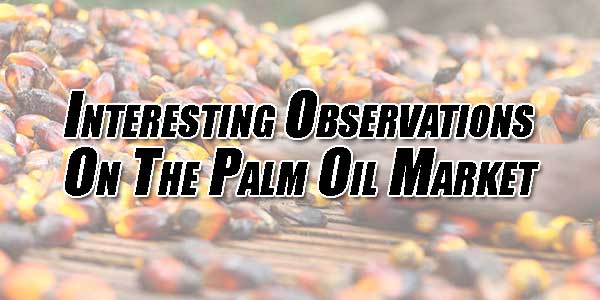
Palm oil as a global commodity is one of the most critical commodities since it constitutes more than half consumed products all over the globe. The palm trees require particular care and can grow in tropical regions only due to the requirement of constant rainfall throughout the year. Tropical places that are 10 degrees to the south or north of the equator are preferred.
Table of Contents
1.) Palm Oil Facts:
Palm oil called crude palm oil or CPO is when the vegetable oil is derived from the palm fruit pulp. Palm oil called palm kernel oil or PKO is when the oil is derived from the kernel of the palm fruit. The CPO and PKO have different characteristics such as their composition, quality, use, and density. The crude palm oil industry consists of 35% of the global vegetable oil market. In 2016, there are over 15 million hectares of plantations of mature palm oil plantations. The palm oil prices are determined by the Malaysian suppliers.
2.) Global Demand:
There is a high demand for palm oil in the food industry and it is closely followed by industrial use. According to Beroe’s market intelligence report, the palm oil analysis shows that there is a steady increase in palm oil market’s growth. Due to the biodiesel industry consuming more palm oil, the stock levels decreased but due to the increase in production, the stock levels will improve this year. There is a chance that the biodiesel industry will continue to increase the consumption of palm oil.
3.) Producers And Consumers:
The producers of palm oil are Malaysia, Indonesia, Nigeria, Thailand, and Colombia. Malaysia produces 30%, Indonesia produces 55%, Thailand produces 3% while Nigeria and Colombia produce 2% each. Indonesia and Malaysia export 56% and 35% respectively. The importing countries are China with 11% imports, India with 20% imports, the E.U. with 15% imports, and Pakistan with 7% imports while others constitute 47% imports. India consumes 15% of palm oil while Indonesia consumes 14%, China consumes 8%, the E.U. consumes 11% and Pakistan consumes 5%.
4.) Palm Oil Companies:
The biggest palm oil companies and manufacturers are LKL Berhad, Wilmar International Ltd, IOI Corporation Bhd, Cardill, and Bunge Limited.

5.) Historical Palm Oil Drivers:
There are three productive crops; soybean, rapeseed, and palm. The palm oil market is successful because it is the most productive of them all globally. This is because palm oil crops are able to yield 7 times and 11 times more oil per hectare compared to the other two vegetable oil crops. Another reason is that it is highly versatile. Price competitiveness is another reason that palm oil continues to be the top choice of many countries such as India and China.
6.) Uses:
The derivatives of CPO and PKO include food where palm oil is used in confectionery, cooking oils, vegetable ghee, salad dressing, and ice cream. Another use of palm oil is in oleochemicals. Palm oil is used as a raw material in oleoresins that are used to produce printing ink and surfactants among others. Cosmetic products and personal care products use palm oil such as lipsticks, detergents, and anti-aging products. Other uses of palm oil are livestock, energy, and biomass.
7.) Investing In Palm Oil:
When it comes to investing in palm oil, there are various ways it can be done. Investing in brownfield or Greenfield is one of the options while another option for investors is to invest in midstream assets. Investing in palm oil futures and public equities are other options for investments. Investing in production assets and vegetable oil brands are other palm oil investing options that investors can consider.
8.) Challenges:
There are many challenges to the palm oil industry. The first is the GHG emissions as palm oil contributes to 4% of GHG emissions globally. Another is deforestation which affects the endangered species. RSPO or Roundtable on Sustainable Palm Oil was formed in 2004 to work with the industry and reduce environmental concerns. The palm oil market can be affected by the working conditions of the people who work in the industry since many lawsuits have been filed against the plantation owners.
9.) Palm Oil Forecast:
Palm oil supply has seen steady growth in the past and the forecast suggests that this will continue. The palm oil market estimate suggests that the value will be over $90 billion or there will be more than 70 billion tons of palm oil output by volume by the end of 2021. This forecast is due to the vast areas it can be used in and the increase in the growth of palm oil production that has grown leaps and bounds over the past two decades.
10.) Future Palm Oil Drivers:
The palm oil market is going to soar in the future as the main drivers that have contributed to its success will continue to be the same. In addition to these, improvement in the standard of living will have a positive impact. Other factors such as demographic growth and diet changes will help propel the palm oil market. The new demand markets will drive the growth of palm oil and so will biodiesel mandates which are introduced in many countries. Sustainability is another driver for the growth of the palm oil market.














Be the first to write a comment.